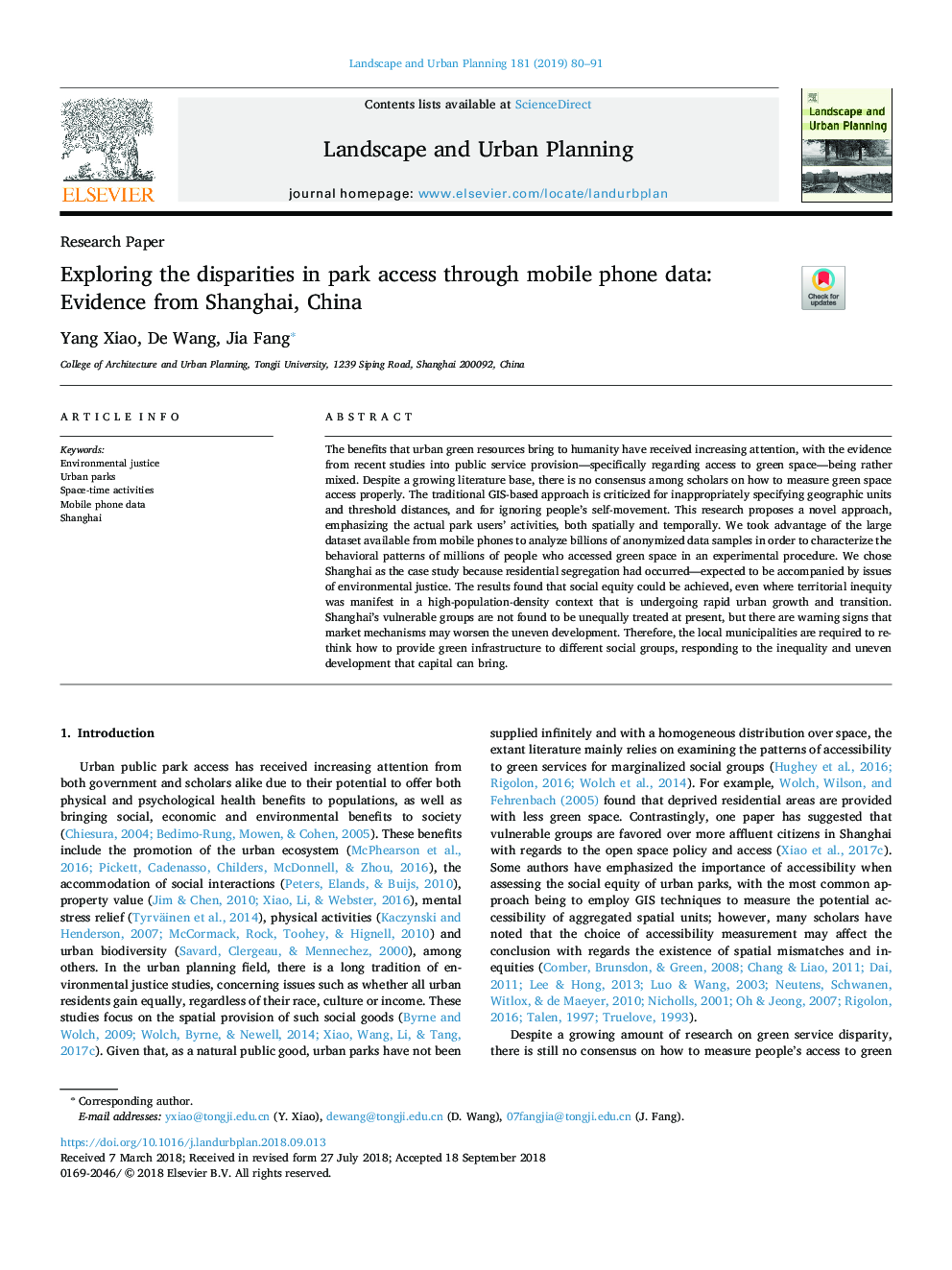| Article ID | Journal | Published Year | Pages | File Type |
|---|---|---|---|---|
| 11020396 | Landscape and Urban Planning | 2019 | 12 Pages |
Abstract
The benefits that urban green resources bring to humanity have received increasing attention, with the evidence from recent studies into public service provision-specifically regarding access to green space-being rather mixed. Despite a growing literature base, there is no consensus among scholars on how to measure green space access properly. The traditional GIS-based approach is criticized for inappropriately specifying geographic units and threshold distances, and for ignoring people's self-movement. This research proposes a novel approach, emphasizing the actual park users' activities, both spatially and temporally. We took advantage of the large dataset available from mobile phones to analyze billions of anonymized data samples in order to characterize the behavioral patterns of millions of people who accessed green space in an experimental procedure. We chose Shanghai as the case study because residential segregation had occurred-expected to be accompanied by issues of environmental justice. The results found that social equity could be achieved, even where territorial inequity was manifest in a high-population-density context that is undergoing rapid urban growth and transition. Shanghai's vulnerable groups are not found to be unequally treated at present, but there are warning signs that market mechanisms may worsen the uneven development. Therefore, the local municipalities are required to re-think how to provide green infrastructure to different social groups, responding to the inequality and uneven development that capital can bring.
Related Topics
Life Sciences
Agricultural and Biological Sciences
Ecology, Evolution, Behavior and Systematics
Authors
Yang Xiao, De Wang, Jia Fang,
